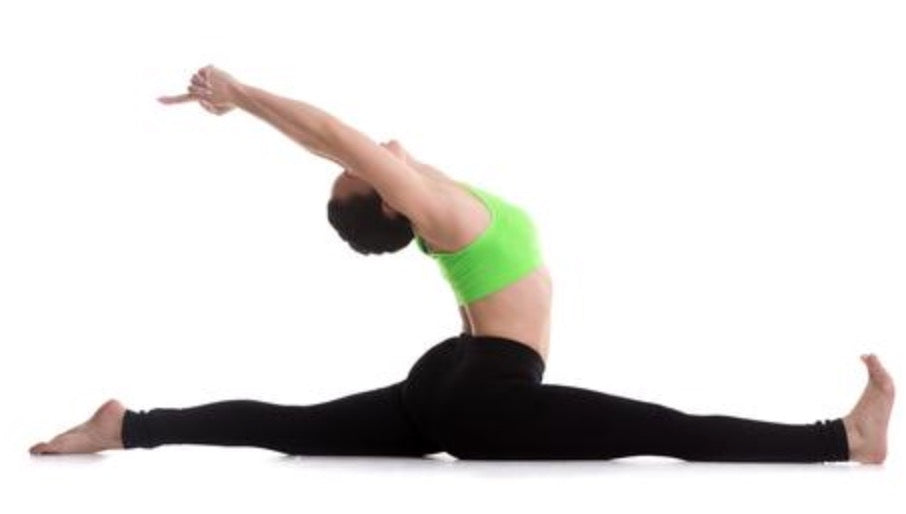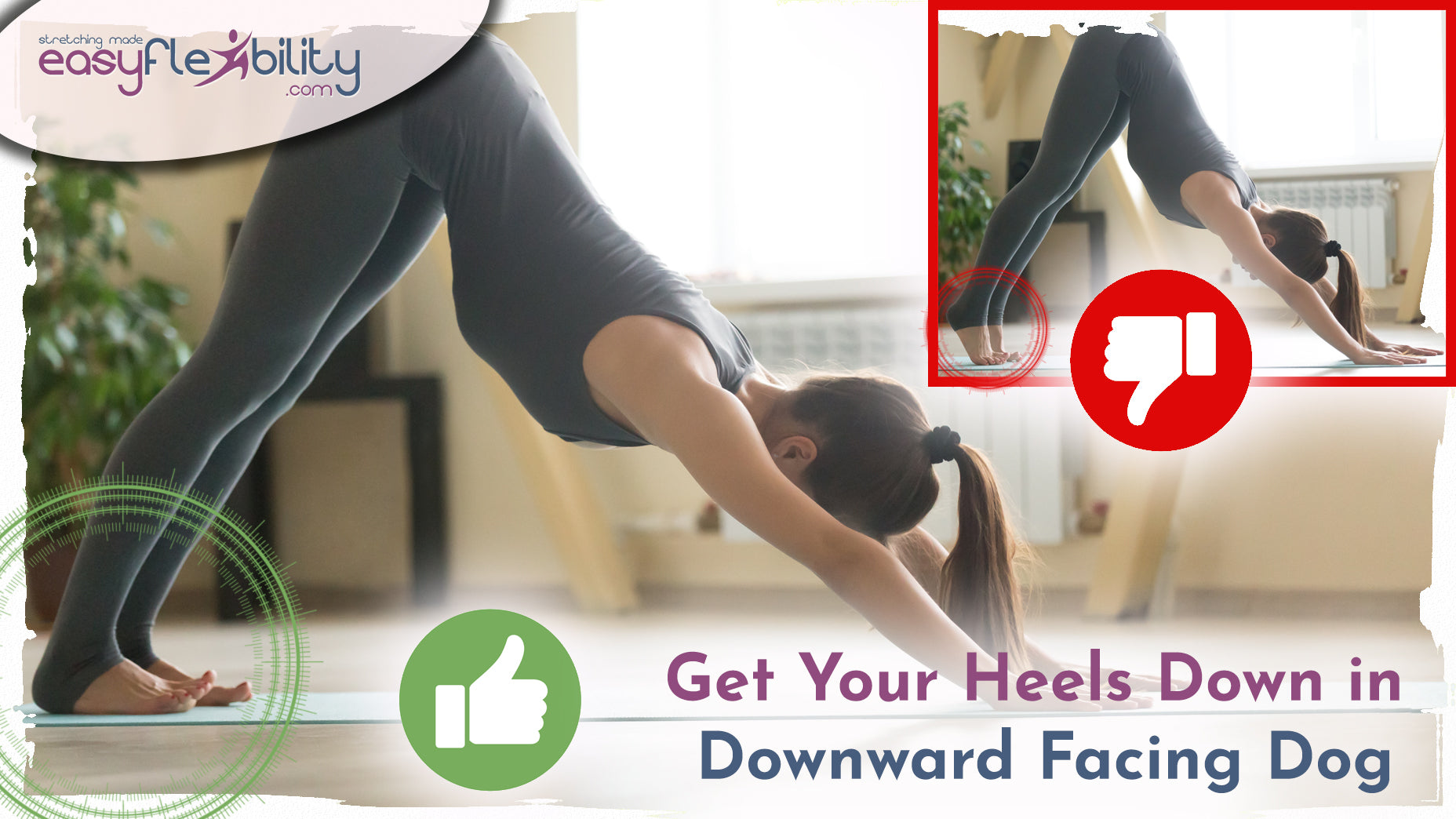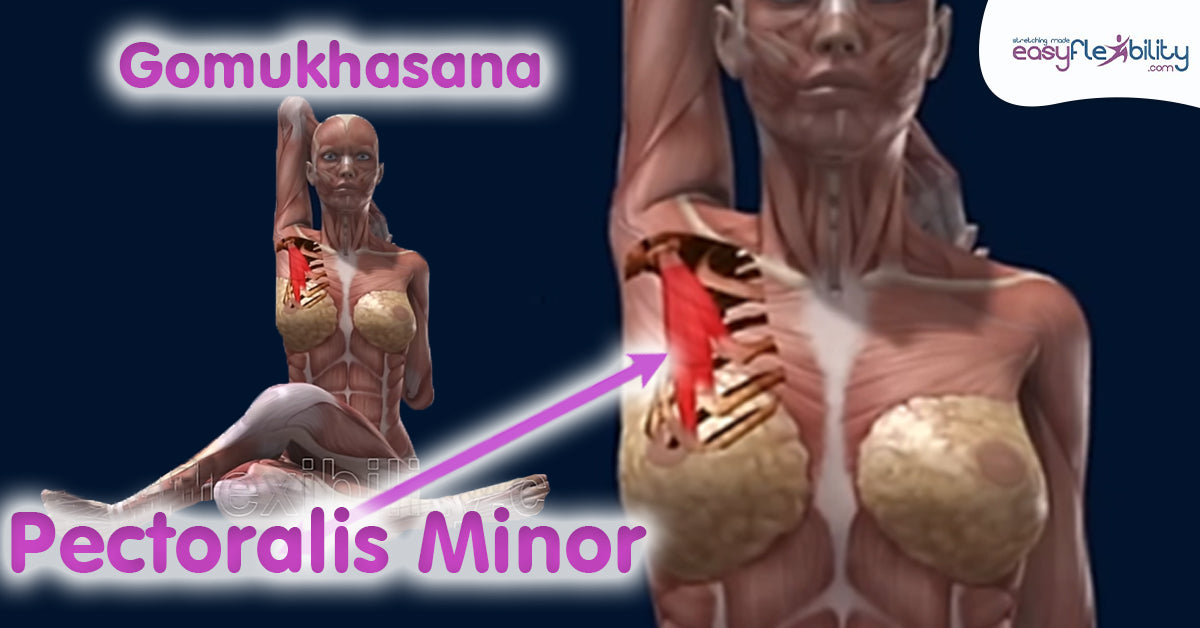The Rectus Femoris: Yoga Anatomy - A Key to Enhanced Yoga Practice
Posted by EasyFlexibility Team on
The Rectus Femoris: A Key to Enhanced Yoga Practice

Yoga is not just a series of poses; it's a journey into the anatomy of strength, flexibility, and balance. Central to this journey is understanding the muscles we engage, including the Rectus Femoris. This muscle is a cornerstone in building a yoga practice that not only looks impressive but feels transformative. Let's delve deeper into the anatomy of the Rectus Femoris and its pivotal role in yoga.
Deep Dive into Rectus Femoris Anatomy
Before we explore how the Rectus Femoris plays into yoga, let's break down the basics of this crucial muscle:

- Rectus Femoris Origin and Insertion: The journey of the Rectus Femoris begins at the anterior inferior iliac spine of the pelvis, stretching down to insert into the patella and the tibial tuberosity through the patellar ligament. This unique origin and insertion points allow it to act across two joints. In other words, think of the Rectus Femoris as the adventurous traveler of your body. It kicks off its journey at the hip's doorstep, right at the front part of your pelvis. From there, it embarks on a thrilling trek down to your knee, where it doesn't just stop to admire the view—it actually hooks up with your kneecap and then bungee jumps further down to your shinbone, all thanks to the trusty patellar ligament. What makes this muscle a bit of a show-off is its ability to strut its stuff across not one, but two joints. Talk about being a double agent in the world of muscles!
- Rectus Femoris Action: Its primary actions include extending the leg at the knee and flexing the thigh at the hip. This dual functionality makes it unique among the quadriceps group. In other words the Rectus Femoris is the multitasking maestro of the muscle world, boasting a special set of skills that make it a standout in the quadriceps quartet. Picture this: with one smooth move, it can extend your leg at the knee like unfolding a telescope, and with another, it flexes the thigh at the hip as if it's bowing on stage. This dual-action talent not only earns it top marks for versatility but also makes it the unique superstar among its quadriceps peers.
- Rectus Femoris Nerve: Powered by the femoral nerve, the Rectus Femoris is a potent force in both the actions of kicking forward and stepping up, mimicking the movements found in various yoga poses. Fueled by the mighty femoral nerve, the Rectus Femoris is the powerhouse behind the art of propelling your leg forward with a kick or elevating it in a graceful step-up, echoing the elegant and dynamic postures of yoga. It's like the muscle equivalent of a yoga guru, adept in the dual disciplines of kicking and stepping with a flair that's both powerful and poised.
The Rectus Femoris in Action: Yoga Poses
The versatility of the Rectus Femoris is showcased in several yoga poses, each engaging the muscle in different ways to achieve balance, strength, and flexibility.
Kapotasana (Pigeon Pose)
In Kapotasana, the stretch of the Rectus Femoris is profound in the extended leg, promoting an increase in flexibility and a deep opening in the hip flexors. This pose exemplifies how flexibility and strength can coexist, with the Rectus Femoris at the heart of this balance.
But it's not just about the therapeutic and yogic wonders; deep backbends like Kapotasana unlock a new level of grace and efficiency in movements that require a supple back. Whether it's the precise forms of martial arts, the flowing sequences of yoga, the expressive movements of dance, the elegant glides of figure skating, or any discipline where back bending is key, mastering this pose can elevate performance to dazzling heights.

🌟 Transform Your Kapotasana Journey with Our Revolutionary Program! 🌟
Struggling to master the Kapotasana pose? Traditional yoga methods can feel like a slow journey, often because they work on multiple muscle groups simultaneously, making progress feel out of reach.
But what if there was a different way? Our unique program breaks the mold of standard yoga practices. Instead of relying on a series of preparatory Asanas, we introduce you to the groundbreaking Zaichik Stretching Techniques. This innovative approach isolates each muscle, allowing for a targeted stretch that's not only pain-free but also fast, easy, and safe.
Say goodbye to the frustrating stretch reflex and hello to rapid flexibility gains. By focusing on lengthening the muscles first, we then seamlessly reintegrate the pose, propelling you quickly towards achieving the full Kapotasana Pose.
Don't let traditional methods hold you back. Embrace our method and watch as you swiftly unlock the beauty and benefits of Kapotasana. Join our program today and experience the difference for yourself!

Virabhadrasana (Warrior Pose Series)
The Warrior poses demand engagement from the Rectus Femoris, particularly in stabilizing and extending the front leg. These poses highlight the muscle's strength aspect, contributing to a powerful stance and a grounded feeling.

Utkatasana (Chair Pose)
Utkatasana challenges the Rectus Femoris through its role in knee extension and hip flexion. This pose is a testament to the muscle's strength, requiring endurance and stability to maintain the "sitting" position.

Anjaneyasana (Low Lunge Pose)
Anjaneyasana stretches the Rectus Femoris of the back leg, emphasizing its flexibility. This pose is particularly beneficial for those looking to enhance the elasticity of their hip flexors and improve overall mobility.
Understanding the Connection Between Rectus Femoris and Emotions

The Emotional Link to Rectus Femoris
If you've been experiencing issues with your Rectus Femoris, it might not just be a physical ailment. Have feelings of being lost or vulnerable crept into your life recently? Interestingly, some texts and holistic practices suggest a connection between the Rectus Femoris and these specific emotions. The idea that our emotional state can manifest physically in our bodies is not new and has scientific backing. Thus, if you're uncertain about your emotional well-being, difficulties with the Rectus Femoris could be your body's way of signaling you to take a closer look at your emotions.
Addressing Emotional and Physical Health Recognizing this connection offers a unique opportunity for healing. By acknowledging that the root of physical discomfort in the Rectus Femoris might be emotional, you can approach healing from two angles: working directly on improving your emotional state or focusing on the physical aspect by addressing the Rectus Femoris itself. This dual approach can lead to a more comprehensive healing process, as addressing one can often benefit the other.
Beyond the Muscle: Digestive and Nervous System Links to Rectus Femoris

Moreover, the issues might extend beyond the muscle and emotions. The Quadriceps, of which the Rectus Femoris is a part, have been linked to small intestine health. This connection suggests that discomfort or issues in the Rectus Femoris could also hint at underlying small intestine challenges. Additionally, the femoral nerve, which affects the Rectus Femoris, is connected to the L3 and L4 vertebrae in the spine. Problems in these areas could manifest as issues in the muscle, further emphasizing the importance of a holistic view of the body.
The Chakra Connection to the Rectus Femoris

In the context of chakra systems, which originate from ancient Indian metaphysical traditions, each chakra is thought to correspond to different physical, emotional, and spiritual aspects of our being.
The chakras are energy centers located throughout the body, and while they don't directly correlate to specific muscles in a scientific sense, they are associated with particular areas of the body. The rectus femoris, located in the thigh and part of the quadriceps group, is primarily involved in hip flexion and knee extension. Given its location and function, it might be most closely related to the Sacral Chakra (Svadhishthana) and the Root Chakra (Muladhara).
- Sacral Chakra (Svadhishthana): Located just below the navel, the Sacral Chakra is associated with emotions, creativity, sexuality, and pleasure. It's linked to the reproductive organs and the lower abdomen. Since the rectus femoris plays a significant role in the movement and flexibility of the lower body, tension in this muscle could potentially reflect imbalances in the Sacral Chakra, manifesting as emotional blockages or creativity stifled by stress.
- Root Chakra (Muladhara): Situated at the base of the spine, the Root Chakra is connected to our sense of security, stability, and basic needs. It's associated with the legs, feet, and base of the spine. Challenges related to the Root Chakra might manifest physically as issues with grounding and stability, which could indirectly affect the rectus femoris, given its critical role in supporting the body's movement and balance.
In conclusion the Rectus Femoris is more than just a muscle; it's a bridge between strength and flexibility, a key player in various yoga poses, and a vital part of our daily movement. By understanding and engaging this muscle in your yoga practice, you embark on a journey of deeper awareness, enhanced performance, and a more profound connection to your body. Remember, the path to mastering yoga poses and enjoying their full benefits lies in the harmony between flexibility, strength, and anatomical knowledge. Let the Rectus Femoris be your guide in this enriching journey.
Recognizing the role of the Rectus Femoris in these poses can transform your yoga practice from a series of movements to a deep, anatomical exploration. It's about more than achieving a pose; it's about engaging the right muscles, understanding their actions, and using this knowledge to prevent injuries and enhance your practice.
The benefits of engaging and understanding the Rectus Femoris extend beyond the yoga mat. This muscle plays a crucial role in daily activities such as walking, running, and climbing stairs. Strengthening and maintaining the flexibility of the Rectus Femoris can lead to improved mobility, reduced risk of injury, and a better quality of life.

Unlock the Secret to Supreme Flexibility with EasyFlexibility's Ultimate Yoga Collection!
Dive into a world where flexibility knows no bounds, and your body discovers movements you never thought possible. With EasyFlexibility's Ultimate Yoga Collection, you're not just purchasing a program; you're unlocking the door to a temple of transformation. Here's what's waiting for you on the other side:
🌟 **Access to 19 Revolutionary Yoga Training Programs:** From the elegance of the Butterfly to the strength of the Hand Stand, journey through over 200 unique exercises designed for your whole body. Each program, from the Downward Facing Dog to the majestic King Pigeon Pose, is your stepping stone to unparalleled flexibility and strength.
🎥 **Over 9 Hours of Immersive Yoga Video Lessons:** Let our EasyFlexibility founder Paul Zaichik guide you through each movement with over 9 hours of detailed video lessons. Watch, learn, and practice at your own pace, in the comfort of your home.
🌍 **Join a Thriving Community of Over 2000 Practitioners and Instructors:** You're never alone on your flexibility journey. With unlimited lifetime access to our vibrant community, find the support, motivation, and personalized coaching you need to reach your goals. Share your progress, ask for tips, and connect with fellow flexibility enthusiasts.
Whether you're aiming to perfect your Plow Pose or master the Eka Pada Sirsasana, EasyFlexibility's Ultimate Yoga Collection is your all-in-one ticket to a more flexible, stronger, and healthier you. Say goodbye to stiffness and hello to a life where every movement is effortless.
Ready to transform your body and mind? Join us now and bend the rules of what's possible. Your ultimate flexibility journey begins here.
Share this post
- Tags: kapotasana, rectus femoris




